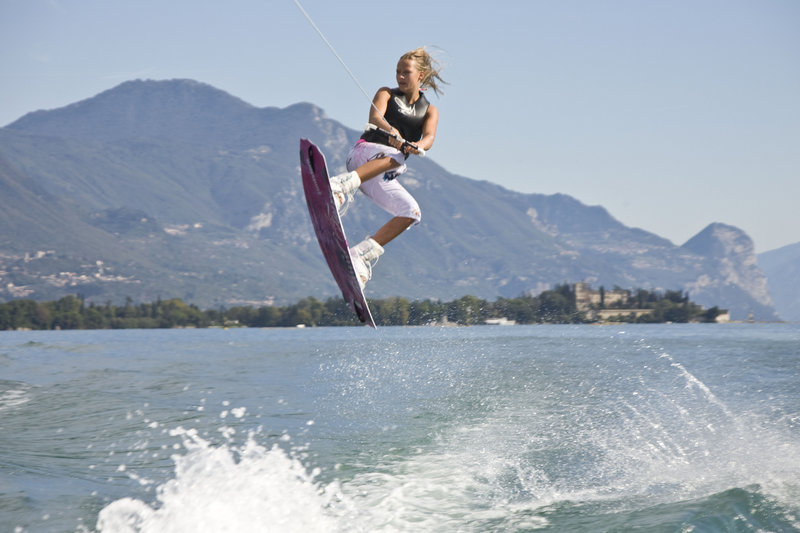Learning how to edge progressively is one of the most important skills in wakeboarding. Virtually every trick uses a progressive edge, as it's the key to getting the most height possible while staying under control. Every wakeboarder should take the time to learn how to edge progressively, it'll help out in the long run. Here we explain the keys to heelside progressive edging.
First, let's define what we mean by a progressive edge. A progressive edge is when you edge on your wakeboard and build up the amount of edge slowly, so that your maximum edge is when you reack the top of the wake. By "maximum edge" we mean that your speed and line tension are at their hardest when you reach the wake.
Think of how a pendulum swings. As it goes out to it's highest point, the ball on the pendulum is moving at it's slowest. When it swings back towards the bottom, it starts slowly, and builds up speed "progressively" until it's at it's fastest point at the bottom. In wakeboarding terms, the wakeboarder is the ball cutting out wide, and you want to wait for the boat to begin pulling you back towards the wake, as it starts to pull you, you begin edging in with the proper body position, and build your edge so it's at it's hardest as you reach the wake, which is the bottom in our pendulum example.
Prerequisties
Before trying to learn the progressive edge for jumping, you should be able to do the following:
1. Ride and be able to edge and carve well.
2. Be comfortable crossing the wakes at high speed.
3. Be able to ollie.
Performing the Heelside Progressive Edge
The setup for a progressive edge is to casually cut out about 10-1 feet outside the wake on your heelside. You want to stand tall and just ride straight while waiting for the boat to begin to naturally pull you back towards the wake. Resist the urge to begin your edge earlier then that. Stand tall, and keep the handle in tight as the boat begins to drift you back in.
As the boat starts pulling you in, lean back and begin to put pressure on your heels. You want an even amount of weight on both feet, and really focus on keeping the handle low and in tight to your body. Stay relaxed.
Continue to build a harder edge by leaning back harder, and applying more pressure to your heels. How much you crouch down is up to you, just make sure you keep the handle in tight and keep edging hard.
As you approach the top of the wake, this is where you need to stand tall. Notice how the rider keeps his line tension by keeping the handle in tight to his hips. Standing tall and keeping the line tight is what generates your pop (air). You don't want to ollie, or physically jump. Just stand tall and keep your weight even over both feet.
If you stand tall and keep the rope in tight after eding progressively into the wake, you should get good pop. To help control it, continue to keep the rope in tight and get your eyes on the horizon. Now you're ready for a whole new world of tricks.
This article is courtesy of Pat McCarthy
Riding the Wake

On the Lake
Sunday, July 6, 2008
Subscribe to:
Post Comments (Atom)
No comments:
Post a Comment